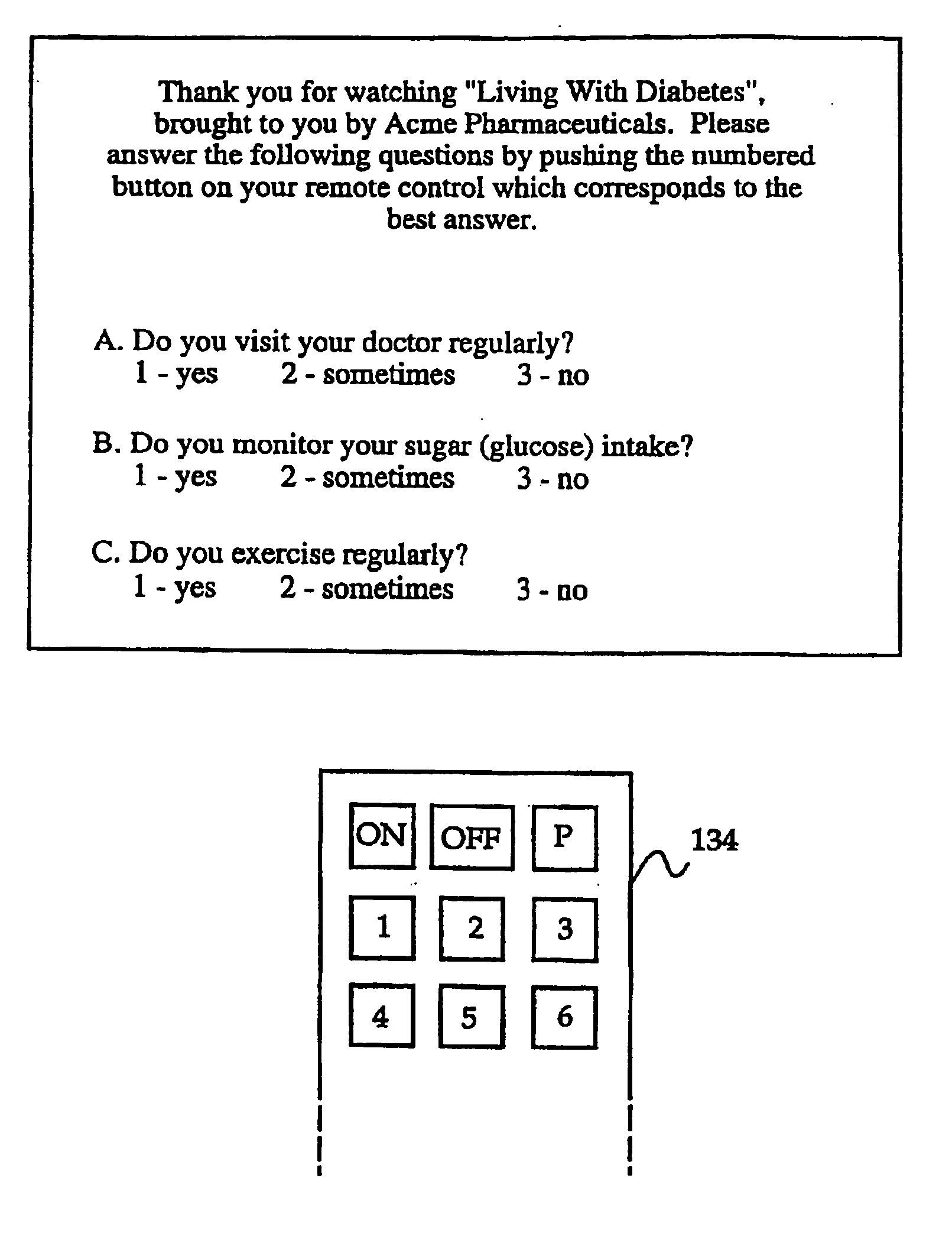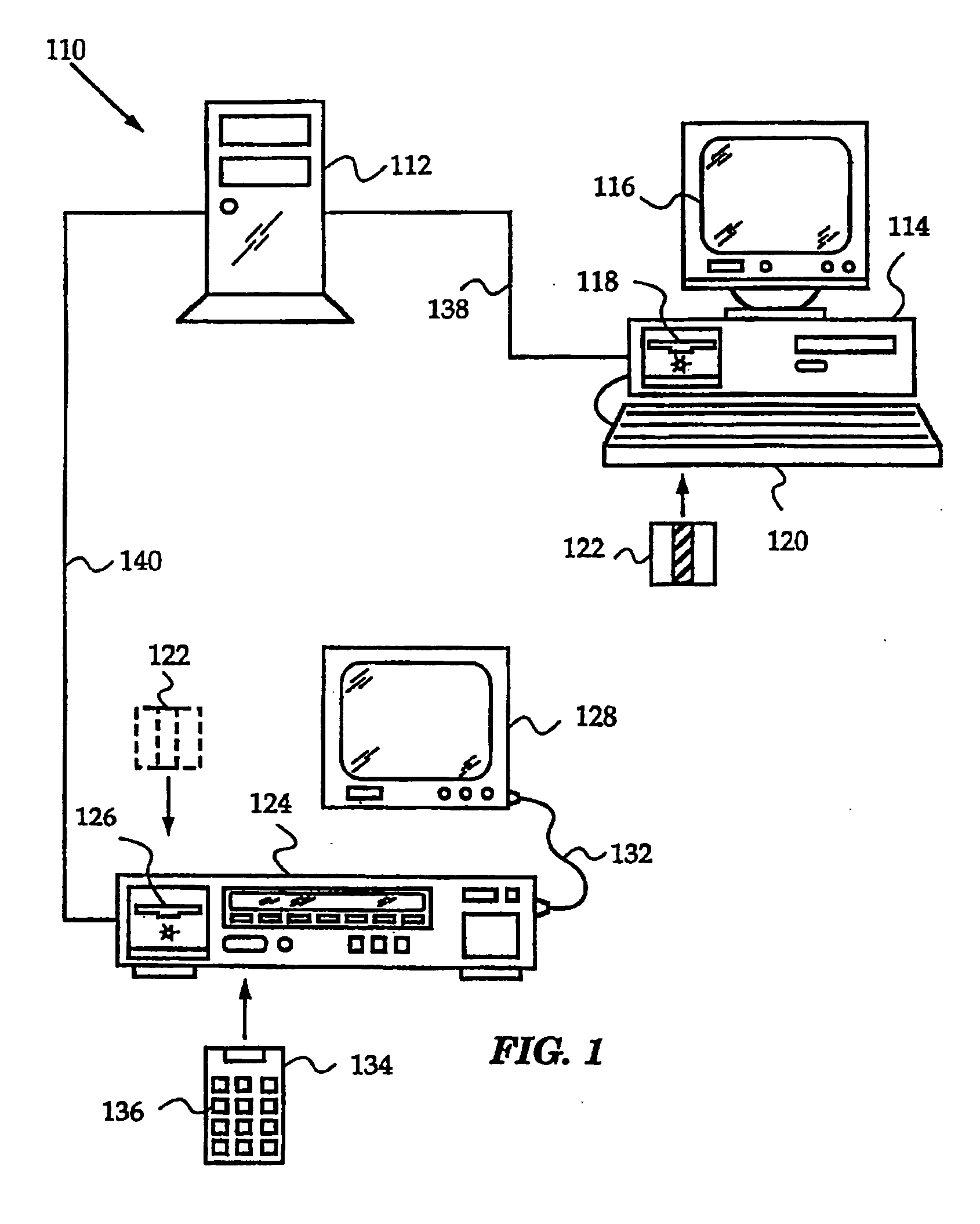System and method for monitoring a physiological condition
a physiological condition and monitoring system technology, applied in the field of medical treatment, can solve the problems of patients' lack of knowledge of basic preventive measures, patients' lack of knowledge of conditions or diseases they do, and many healthcare providers face the lack of knowledge of patients, so as to achieve the effect of higher treatment complian
- Summary
- Abstract
- Description
- Claims
- Application Information
AI Technical Summary
Problems solved by technology
Method used
Image
Examples
smoking — example 1
SMOKING—EXAMPLE 1
[0089] The patient has a severe case of nicotine addiction. The physician determines, according to the flow chart in FIG. 11, that distraction is the best psychological strategy to induce the patient to quit smoking. Therefore, the physician prescribes playing the Quit Game, a video game containing a behavioral program based on distraction. This game contains graphical game characters engaging in various competitive activities upon proper input from the user. The smoker plays the game is played whenever he or she feels the urge to smoke. An exemplary game to provide such engaging distraction is shown in the flowchart illustrated in FIGS. 18A and 18B. In this particular embodiment the game distracts the player with falling bricks which have to be arranged in rows. During the game the main characters communicate to the patient instructions and simple strategies to quit smoking immediately and advise the user to take this approach, all within the context of the enterta...
— example 2
GROWTH DISORDER—EXAMPLE 2
[0093] The physician diagnoses the patient with a growth disorder, such as Turner's Syndrome or a similar condition, requiring growth hormone treatment and a psychological treatment strategy for helping the patient cope with his or her condition. By following a selection process similar to the one indicated in FIG. 18A-18B, the physician prescribes a video game combining self-awareness training, self-efficacy, role-playing, counseling and competition. The flowchart of the Growth Game is provided in FIG. 19.
[0094] In the video game the graphical game character, Packy, is a young elephant who, like the patient, is on growth hormone therapy. The video game consists of three pans, each associated with a particular aspect of the treatment. In the first part Packy encounters obstacles which he must surmount, in the second he has to learn about growth hormone injections, and in the third one he has to keep a personal growth diary.
[0095] In the first part Packy le...
— example 4
NON-INSULIN DEPENDENT DIABETES MANAGEMENT—EXAMPLE 4
[0106] A video game treatment can be used for management of non-insulin dependent cases of diabetes (NIDDM). In such cases the video game is an interactive information resource, as well as a role-playing game. The game helps the patient, especially an adult patient, explore the topic of Staged Diabetes Management. The information is presented in hypertext format, allowing the patient to select a stage, read a brief overview of it, and select details to examine it in greater depth in desired. The game encourages active involvement in learning and provides opportunities to rehearse various health behaviors and see the consequences that result by observing what happens to a graphical game character who displays these behaviors.
[0107] The content of the game is based on the Staged Diabetes Management program, developed by the International Diabetes Center and Becton Dickinson & Company. The progressive set of stages ranges from least t...
PUM
 Login to View More
Login to View More Abstract
Description
Claims
Application Information
 Login to View More
Login to View More - R&D
- Intellectual Property
- Life Sciences
- Materials
- Tech Scout
- Unparalleled Data Quality
- Higher Quality Content
- 60% Fewer Hallucinations
Browse by: Latest US Patents, China's latest patents, Technical Efficacy Thesaurus, Application Domain, Technology Topic, Popular Technical Reports.
© 2025 PatSnap. All rights reserved.Legal|Privacy policy|Modern Slavery Act Transparency Statement|Sitemap|About US| Contact US: help@patsnap.com



